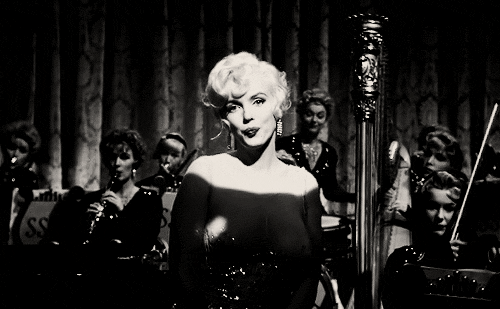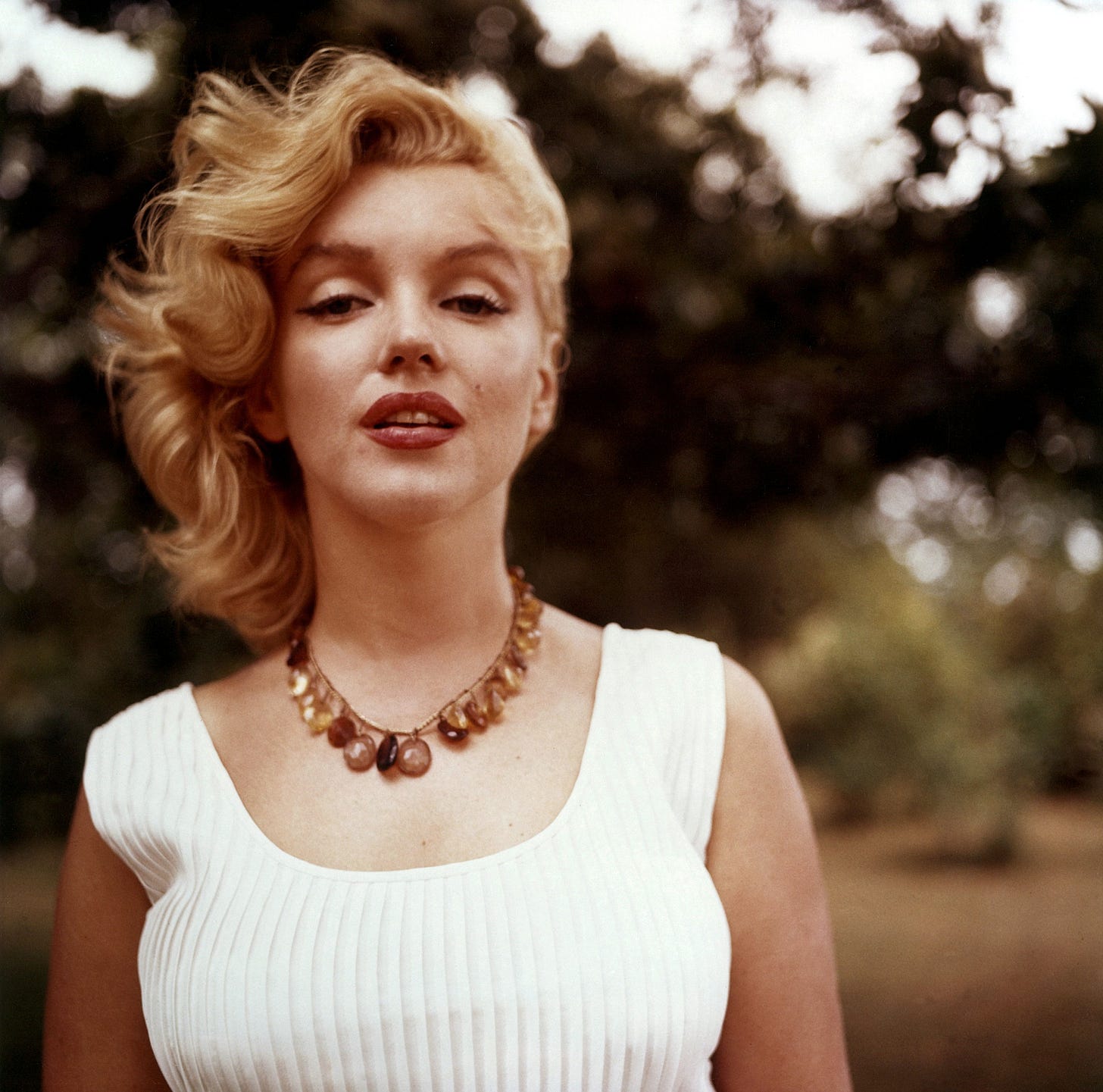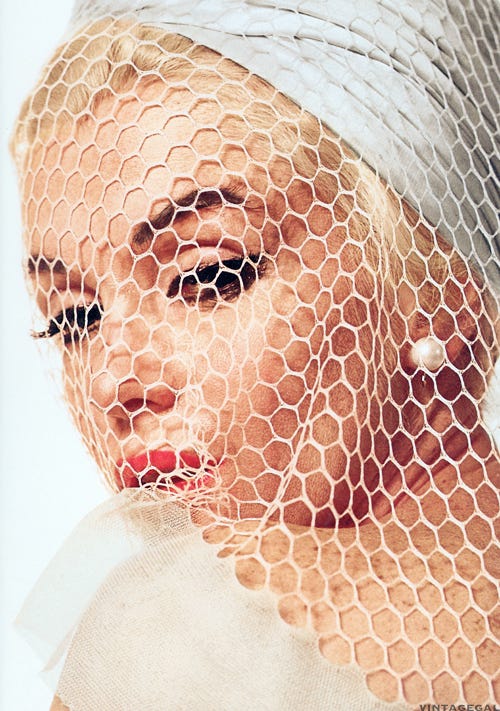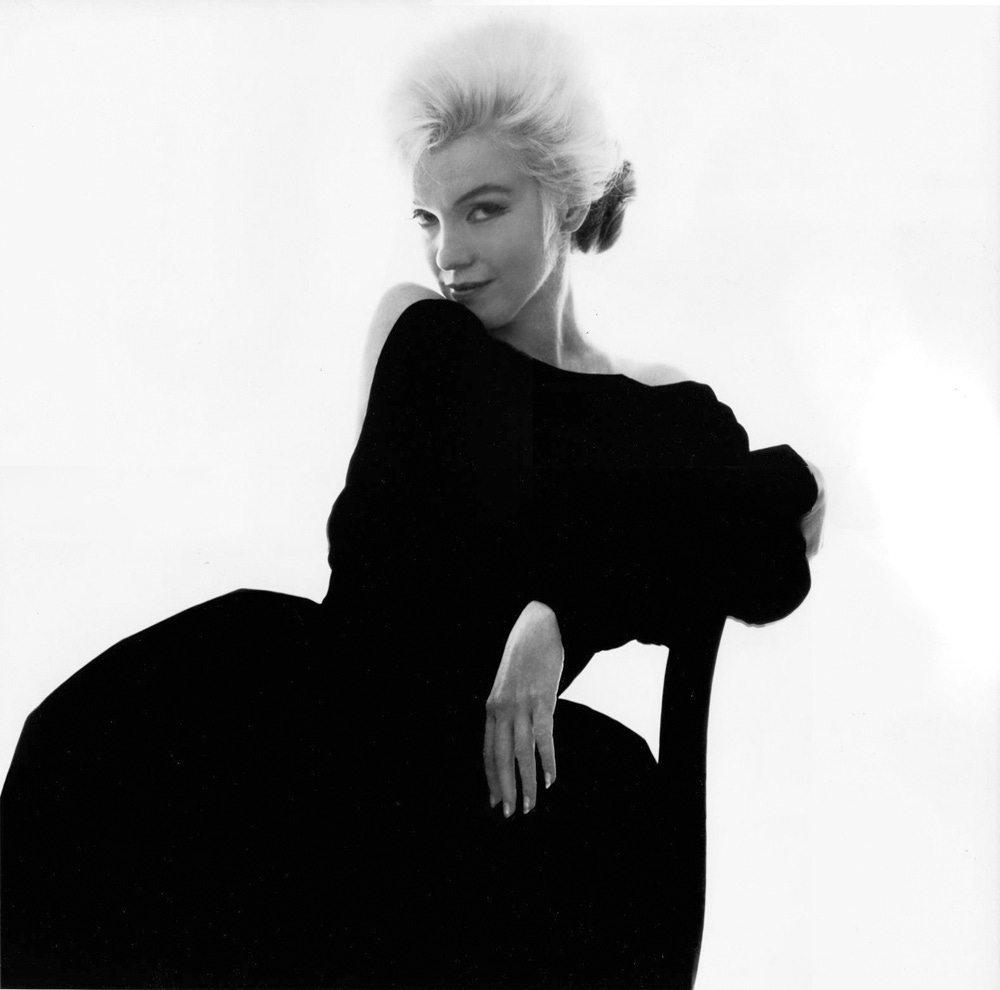On Being a Woman Artist & Further Notes on Blonde (2022)
Understanding Marilyn Monroe as an artist is crucial to understanding her as a human being.
Actress must have no mouth.
Fragments: Poems, Intimate Notes, Letters by Marilyn Monroe
Like any creative human being, I would like a bit more control.
Marilyn Monroe, interviewed by Richard Meryman, Life Magazine, August 3rd of 1962
What [Marilyn Monroe] has — this presence, this luminosity, this flickering intelligence — could never surface on the stage. It’s so fragile and subtle, it can only be caught by the camera. It’s like a hummingbird in flight: only a camera can free the poetry of it.
“A Beautiful Child”, a 1979 essay by Truman Capote on his friendship with Marilyn Monroe that takes place during April 1955.
You are never more yourself than when you’re alone. When your hair is up and your masks are down. When a crepuscular quiet has cooled the city. When the only thing racing and alive seems to be the turmoil and delights of your own mind. It is often here, in that liminal corridor, that actors do some of their best work acknowledging the multitude of differences and overlaps between our many public and private selves.
As a performer, Marilyn Monroe’s best work is often built from her rapport with others especially as a comedian of grace and humanity. When I think of her alone as a performer though what comes to mind is her work in Don’t Bother to Knock, the 1952 film in which she plays a mentally disturbed babysitter that takes place amongst a fraught cast of characters in a hotel. I think of her looking at herself in a mirror, trying on another woman’s jewelry. As she examines her reflection it’s evident this is a playful way to imagine a life other than her own. With her gaze and gestures, flesh and spirit she is able to communicate the deep well of yearning of a woman society hopelessly misunderstands.
Blonde, the feverish adaptation of Joyce Carol Oates’s hothouse novel written/directed by Andrew Dominik, and its pale imitation of a star, Ana de Armas, fail routinely to show such complication and artistry within their rendition of Monroe. But the film — like the novel and most of what is written about Monroe — is more interested in the myth of the broken girl Norma Jeane than her “false” creation of Marilyn Monroe to be able to create a meaningful, empathetic portrait of a woman weighted by trauma and trying to make it in the world as an actress rather than just a flesh-bound approximation of her screen image which subverted the dumb blonde but wasn’t defined by the archetype. What I haven’t been able to say before is that the film is a tedious rendition of culturally held misogynistic idea(l)s that it purports to critique through the machinations of Hollywood. Its misogyny is so old, so rote it renders the grueling film somewhat of a bore. If you actually want to learn more about Monroe actually watch her films like Gentlemen Prefer Blondes, Bus Stop, How to Marry a Millionaire, and The Misfits, to understand why she endures. Read Marilyn in Manhattan: Her Year of Joy by Elizabeth Winder or Jacqueline Rose’s chapter on the actress in Women in Dark Times or the potent, well-researched work The Many Lives of Marilyn Monroe by Sarah Churchwell. Parse through these works to learn about the artist and humanity of this woman, rather than just falling prey to the stark misogyny of the mythology!
For Vulture, I wrote about de Armas’s failed embodiment of the actress and the various travesties of the film. I am immensely proud of the piece. I labored over every sentence, every transition, every thread of my argument. I wanted to create something beautiful and true. I believe I did. But one thing I noticed is that people were responding to a particular passage that circles the wound of what it means to live as a woman artist:
“The trouble with being a woman and making your art look so natural is that the world believes you unaware of your own magic; you’re less skilled artist than unaware naif merely happening upon great talent.”
This was a late addition to the piece that came to me sometime around 2am after waking up and being unable to go back to sleep. I grabbed my phone, pulled up the Google doc, and wrote. In this sentence I poured from my soul some sincere beliefs about womanhood and artistry.
Blonde has led to fiery arguments and bad faith readings on all sides. I am not interested in parsing through this, especially with the people defending the film on dubious grounds. You’ve seen them if you’ve been online recently. People (it should be noted mostly cis-men) shrugging off the film’s misogyny, ignoring its obsession with hitting every tired cliche of the false mythology that has put a stranglehold on Monroe’s legacy, and confirming some noxious beliefs about the hyper-feminine that the film reaffirms through its aesthetics and narrative. For the record, I am never surprised by the ways (some) men confirm their hate toward women, especially those who consider themselves more evolved as feminists and leftists. But parsing through these arguments is a futile activity. Worse yet, it’s a waste of time. Like I said, I am proud of my essay. I want it to stand on its own. But I wanted to also expand on some thoughts about being a woman artist.
Being an artist and writer is rather important to my conception of my own identity. This status, scholarship, and careful crafting of my art is just as important to me as being a black woman. I think a lot about what it means to be a black woman and an artist; how your art is bound up with your history and identity. In 2016, I remember reading a rather revealing piece about the “deadly clock” constraining black women artists from the now defunct site The Establishment.
As Stephanie Fields writes in the essay, “Put bluntly: Black women creatives have not been able to afford to trifle with time. For them, it is a literal tumor that eats away at their lives. Audre Lorde, Toni Cade Bambara, Pat Parker, Claudia Tate, Minnie Riperton, Lorraine Hansberry, Kathleen Collins have all died pretty much the same way: fairly young, of cancer, and on the cusp of burgeoning creativity.
It’s a scary pattern, especially when you are, as I am, a black woman creative fighting tooth and nail to get work out. I’ve always been plagued by the question, why. Why did all of these brilliant women go out the same way, at the hands of such a brutal killer?”
This essay unlocked a deep fear within me. I don’t know how much time I have in this life. I must write and put my soul on the page every time. I want to leave a body of work defined by beauty, intelligence, and passion behind whenever I march off from this mortal coil. But the essay made me think of the ways women, in particular black women, navigate the boundaries of art and health. As someone who deals with suicidality and other heinous mental health concerns, I worry about a life cut short due to trauma. I worry art won’t be enough to sustain me amongst my loneliness. I worry about what happens when other people have a chance to write my story, that’s why I must write it on my own. The people who have come to write Monroe’s story — from friends and former lovers eager to cash in on the legend to figures like Gloria Steinem — have enshrined within it a barely veiled contempt for ever considering Monroe an artist not just a victim who tripped upon her own creative powers.
In a 2000 New York Times interview promoting Blonde, in which Joyce Carol Oates would bluntly state that Monroe was complicit in her own terrible “fate”, the author tips her hand to the misogyny, lack of empathy, and paucity of imagination that beats through the heart of the book and the film adapted from its pages. In the interview she says, “I never had any interest in Marilyn Monroe and I have to tell you immediately that I never would have written a book about Marilyn Monroe [...] It was something that happened to me, the way her life happened to Norma Jeane.” I don’t think it’s a coincidence being an artist has been obliterated from the Monroe mythology. Oates can’t connect with Monroe as an artist because she doesn’t see her as one. She is seen as a plaything for the patriarchy, a victim, a muse, a series of mistakes. To see Monroe as an artist is to give her a sense of agency that those obsessed with breaking her apart to tell old stories refuse to believe she ever had in life.
This extends to Blonde’s director, who in an appalling interview with Deadline, unapologetically states, “Any person that’s killing themselves is not a figure of female empowerment. As much as we want to reinvent Marilyn Monroe as the female du jour, I don’t think that that’s responsible.” Where the fuck do I begin with this? The rank disregard for those dealing with mental illness and suicidality? The insistence on rendering Monroe without agency? The cruel condescension toward modern feminism? Or should I turn my gaze upon what this quote says about the intersections between mentally ill women and how their art is conceived?
So much of my artistry is bound to — or at least inspired by — (my) madness. I don’t mean to shore up the cultural obsession with the mad genius. (Are women even allowed to carry such a distinction? Why isn’t Monroe considered a mad genius given her artistry and mental illness struggles? Is it because the genius side of the phrase also gives her an artistic and intellectual agency?) I would still be an artist if mental illness hadn’t blown through my life and taken residence forevermore. But madness — the experience, its textures, its various cultural representations — is a theme I keep coming back to again and again and again. Is it a surprise I got the word madwoman tattooed on my right arm?
Often when I think of women artists my mind goes to the tremendous work of scholarship, From the Beast to the Blonde: On Fairy Tales and Their Tellers by Marina Warner. At the front of the book is a picture of a fifteenth-century frontispiece in which author Giovanni Boccaccio is depicted as sitting “outside the circle of storytellers, eavesdropping.” Warner notes it “sustains the narrative convention that male authors often acted as mouthpieces for women’s firsthand experiences.” Dominik may be adapting a book by a woman but he is adding, of his own volition, new layers of menace and spite toward the ways women have had to navigate the patriarchy and what it means to be a woman artist in a world not built to nurture your craft, let alone your personhood. Perhaps it is best to wonder then, when will this world allow women to speak for themselves and actually listen to the complexity of what we have to say?









You’re one of my favorite writers and definitely the Marilyn scholar. You most likely don’t remember, but i once asked how you’re able to create even with depression, and you told me it’s supremely difficult, but you do it. I’ve struggled with suicidal feelings, too. But i haven’t ever been able to fully embrace the madwoman like you have, Angelica.
Thanks for your review and this newsletter. I was always fond of Marilyn. The Misfits was one of the first movies I had seen, and her work left me breathless. The way she and Monty Clift, another troubled soul, interact is just...mesmerizing. Thank you for recognizing Marilyn’s artistry and humanity 💖
Thank you for this. Hate the way Monroe has been conceived as Trauma Barbie instead of the complex, intelligent, *skilled* artist she was.